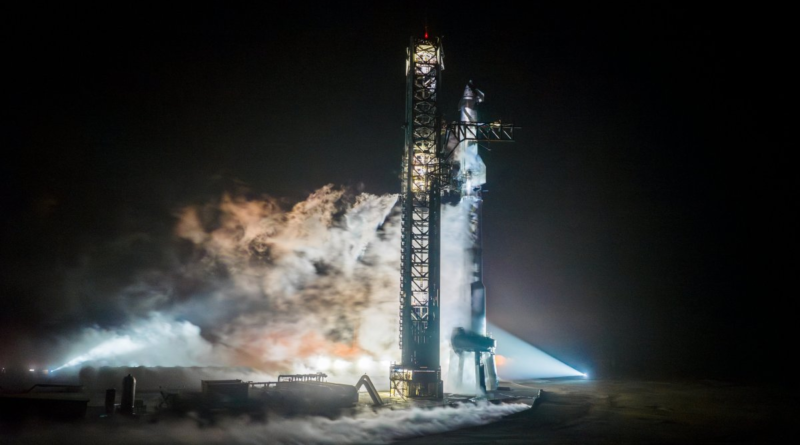SpaceX eyes March 14 for next Starship test flight
SpaceX is aiming to launch its massive Starship rocket for the third time as soon as March 14, the company confirmed in a social media post Wednesday.
SpaceX is still awaiting regulatory approval from the Federal Aviation Administration for the launch, without which Starship will remain grounded. But even though the FAA has yet to give SpaceX the green light for the next mission, there are signs that the company has been anticipating receiving it — soon. Just this past weekend, teams at the Starbase facility in southwest Texas completed a critical “wet dress” rehearsal for launch, loading the nearly 400-foot-tall rocket with more than 10 million pounds of propellant and practicing the countdown sequence to T-minus 10 seconds.
The FAA further confirmed late last month that it had completed its investigation into SpaceX’s second Starship launch, with regulators saying at the time that the company had to complete 17 “corrective actions” before issuing a modified license for launch. Provided that those are rubber stamped within the next week or so, the company should make its March 14 target date.
SpaceX conducted the first Starship orbital flight test last April; there was a seven-month gap between it and the second test, which took place last November. Both ended with mid-air explosions of the Super Heavy booster and the upper stage (which is also called Starship). Despite these catastrophic conclusions, the second test went notably farther than the first, with the company demonstrating a handful of key technologies it was unable to execute the first time around.
No doubt the company is hoping to keep up that trend, though this third test introduces a handful of new, very ambitious objectives, including a propellant transfer demonstration during the Starship upper stage’s coasting phase and the first-ever relight of a Raptor engine in space. Propellant transfer in particular is a key capability that the company must master to complete its multibillion-dollar missions to the moon for NASA.
For the most part, the upcoming launch will have the same basic mission profile. If all goes to plan, the order of operations should go something like this: Shortly after launch, the Super Heavy booster will separate from the Starship using a novel “hot staging” separation technique that involves the upper stage lighting its engines to push away the booster. That booster will then complete its own “boost back burn,” similar to how Falcon 9 boosters return to Earth, and splash down in the Gulf of Mexico.
Meanwhile, the Starship upper stage will continue its ascent to orbit. Once it reaches orbital velocity, it will cut off its engine and coast almost the entire way around the world before also splashing down in the ocean. As opposed to the first two missions, this time around the company will fly a new trajectory that would have Starship splashing down in the Indian Ocean (as opposed to the Pacific, near Hawaii), to attempt that Raptor engine relight in space.
On its website, SpaceX emphasizes that this mission is part of a test program to enable the company to collect data on the vehicle’s performance in a real flight environment.
“This rapid iterative development approach has been the basis for all of SpaceX’s major innovative advancements, including Falcon, Dragon, and Starlink,” the company says. “Recursive improvement is essential as we work to build a fully reusable transportation system capable of carrying both crew and cargo to Earth orbit, help humanity return to the Moon, and ultimately travel to Mars and beyond.”




